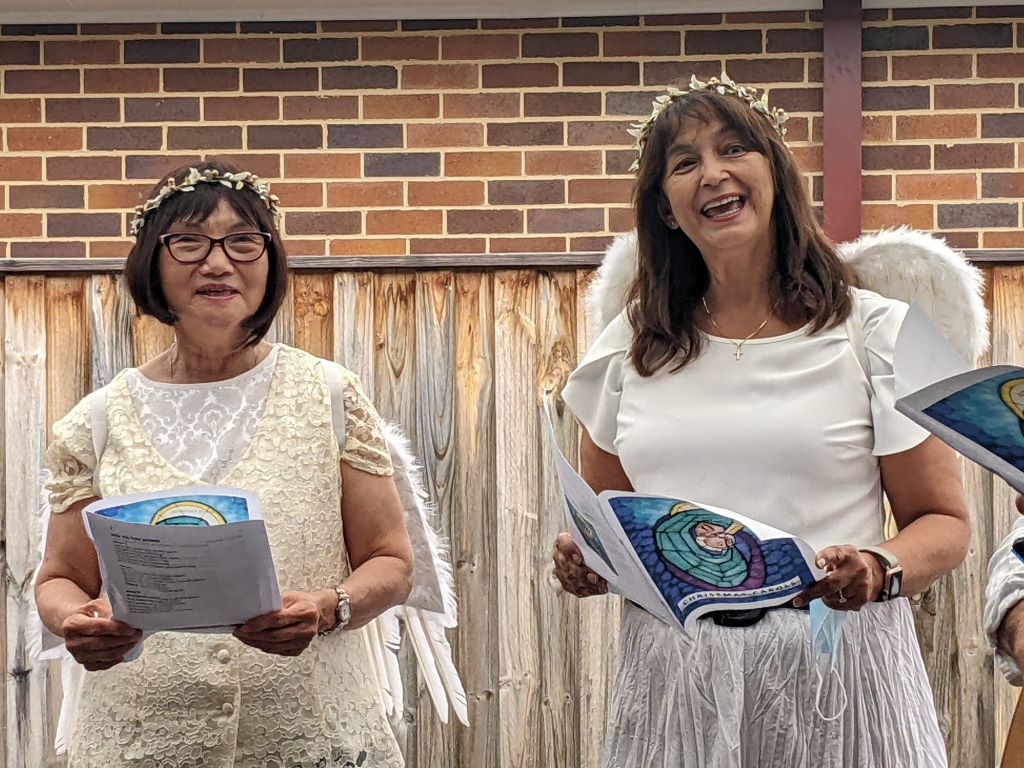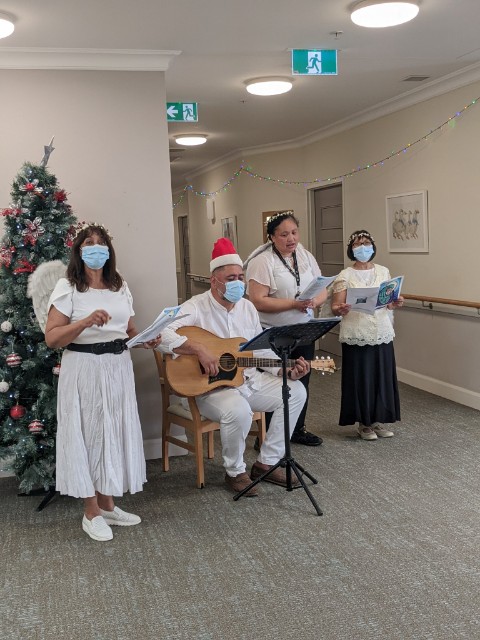
Christmas carols certainly got a reaction from aged care residents living with dementia in a South Western Sydney community.
In one case, resident Roy, 71, was so moved by Oh Come All Ye Faithful he picked up a guitar for the first time in months and started strumming and joined in singing.
In another case, resident Anne, who has been non-verbal for some time, began dancing spontaneously to the tunes.
Carol Blanchard, Hammondcare pastoral care coordinator, said the carols at Hammondville’s dementia specific cottages at Southwood, Harding, The Meadows and Bond House were powerful in stirring memories in residents and producing strong reactions.
“I noticed how a resident whom I’ve never seen smile before actually smile sometimes while he was listening to us sing familiar Christmas carols,” Ms Blanchard said.
“Some people who remembered the music but not the lyrics mouthed the words as they sang along with smiles on their faces.
“At other times a few residents had tears running down their cheeks during the singing of the hymn Silent Night,’’ she said.
Carol joined other members of the pastoral care team including Jon Paolo, Moana Muller and pastoral care volunteer Kim Nguyen in a series of carol services at Hammondville.
Grant Murray led the services in the Meadows cottages and volunteer manager Debbie Webster also gave support.

Jon, who led with his guitar, said one gentleman on a walking frame spontaneously began to dance to one carol.
“The carols caused an impact in people living with dementia that I have not seen before,” Jon said.
Professor John Swinton, author of Dementia: Living in the Memories of God, and a world leader in disability theology, said carols were like a bridge to memories for people living with dementia.
“One of the things that I have learned over the years is that no matter how distant a person may appear to be, there is always a way to cross that bridge and finding a way of connecting,” Prof Swinton said.
“Music is a wonderful example of what that looks like. It’s a form of communication that seems able to get behind and beyond our neurological damage to those places in our brains where memories are hiding.
“The brain takes the musical signals and redirects them via different, unbroken neural paths where our memories hide.
“When the music releases our memories, we are taken to a time and a space where things were very different,” he said.
HammondCare boosted its pastoral care team numbers by more than 10 per cent in the past year.
General manager of pastoral care Steve Calder said the increase in his staff meant the team can support more residents, clients and patients and engage in spirituality in ways that are meaningful to them.
“Pastoral care has been a key part of Hammondcare for the past 90 years,’’ he said.



